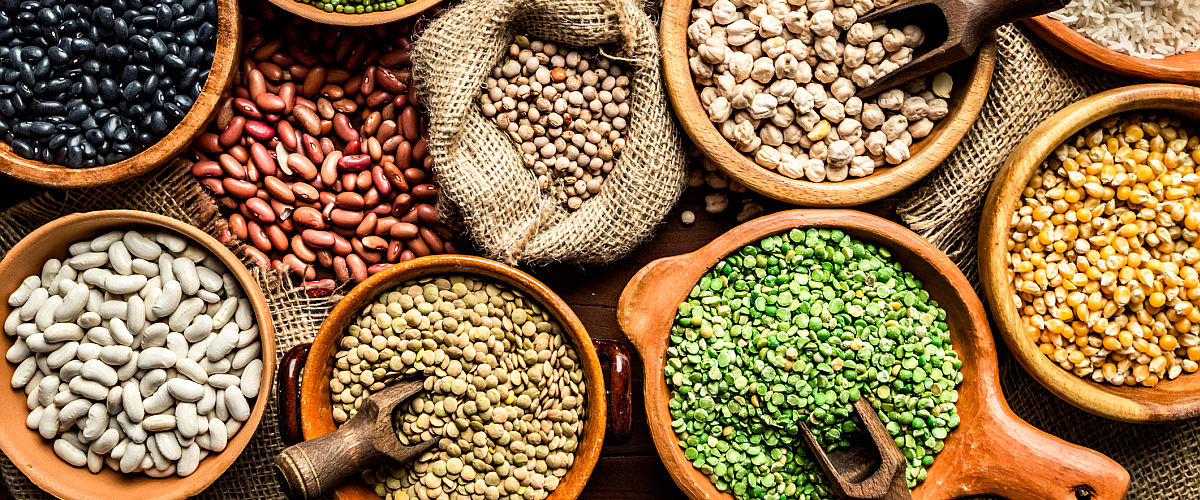We love to try new foods! Experimenting keeps meals interesting, especially when ingredients can be used in many ways. And when food packs a health punch, it’s even better for feeding your potential.
That’s why we wanted to explore legumes, specifically a type called pulses. You may be a bit unfamiliar with this ingredient, but if you enjoy hummus or split-pea soup—then you already love pulses!
Legumes and pulses are nutritional powerhouses that can find their way into your meals, any time of day. Dig in as we learn the world of legumes and pulses with Becky Garrison, a registered dietitian nutritionist (RDN) and director of domestic marketing for the USA Dry Pea & Lentil Council and the American Pulse Association (collectively known as USA Pulses).

Becky Garrison, RDN, USA Pulses
Getting Familiar
First, we asked Becky to break things down for us. What exactly are legumes and pulses?
Legumes are plant foods grown in pods. You know them as soybeans, fresh beans, peas, alfalfa, and peanuts (remember, not a nut!) When legumes are left to dry out longer in the fields, they become pulses. Think dried peas, lentils, beans, and chickpeas.
“Pulses are simply the dry, edible seeds of legumes,” Becky explains. “In fact, the word means ‘thick soup.’” Pulses need very minimal processing, she adds. What you see on grocery store shelves looks just like it did when it was harvested from the field.
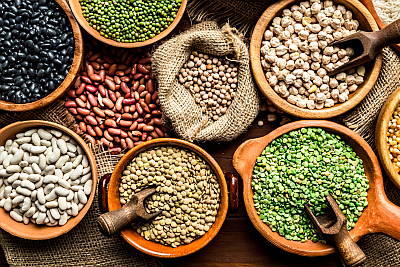 Good Things in Small Packages
Good Things in Small Packages
Pulses may be tiny, but their nutritional resume is impressive. Becky shares that the headline here is that they are an excellent source of dietary fiber. Pulses offer more fiber than other legumes because they grow longer. How much fiber are we talking about? A half-cup of pulses has four times the fiber of a half-cup of brown rice. (Wow!)
“Many people struggle to get enough fiber in their diets. Pulses are great for filling that gap,” she says.
That fiber is good for your body in so many ways. Research shows that eating pulses can help lower blood cholesterol and blood pressure levels, which is a positive step for stronger heart health. Fiber also promotes gut health and helps you stay full between meals. What’s more, pulses have a low glycemic index—meaning your body digests them slowly, and they won’t cause wide shifts in blood sugar.
But that’s not all! Pulses are low in saturated fats and sodium. They are also rich in other important nutrients including plant-based protein, folate, potassium, and iron. (And did we mention they’re also easy on the planet?)
“In the wellness world, you often hear about foods that are ‘nutrient-dense,’” Becky shares. “Pulses are a perfect example of that.”
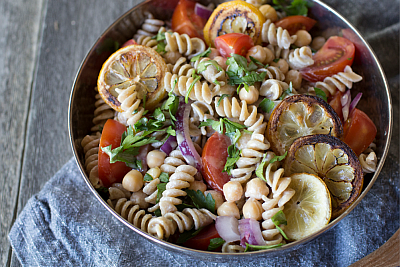
Get Recipe: Baked Lemon Mediterranean Pasta Salad
Pick Your Pulse
If you enjoy cooking from scratch, starting with dried pulses lets you add flavor along the way. Know that one cup of dried pulses will become two cups cooked. “Dried lentils and peas are a good place to start because you don’t need to soak them first,” Becky suggests. “They cook quickly, about as fast as rice or pasta.”
Though they are a bit pricier, you can’t beat the convenience of canned pulses, which will save you the step of soaking them. You can also find pulses flash-frozen, or make a big batch and freeze it yourself for later. Pick your preference, Becky says, “You’ll get the same nutrition no matter what.”
And while you’re at it, stock up! Dried or canned, pulses can last up to two years in your pantry. She also points out that pulses cost a fraction of what you’d spend on meat, making them affordable for anyone on a budget (who isn’t?) Look for canned varieties with low or no sodium, and rinse canned beans before using to keep an eye on added salt.
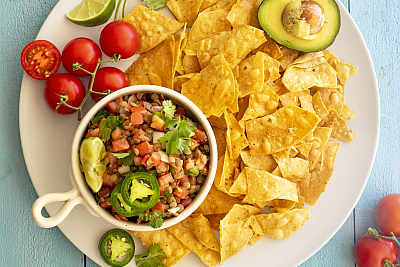
Get Recipe: Lentil Salsa
The Possibilities of Pulses
By now we hope you’re convinced to give pulses a spin. But what to do with them? For that answer, you can find culinary inspiration around the globe. Pulses are a common in Mediterranean, Indian, Latin American, and Middle Eastern cuisines, among others.
Here are a few ideas (and recipes!) that show off pulses’ versatility:
- Treat them like a vegetable: Add to smoothies, or use in soups, salads, and stews. Try this Baked Lemon Mediterranean Pasta Salad.
- Treat them like meat: Pulses can be swapped for meat ingredients in many dishes. Becky likes to go half-and-half with mashed lentils and ground meat in burgers, meatballs, and tacos. Try this Avocado Chickpea Salad on your next sandwich or make a meal of Split Pea Avocado Mash Tostadas.
- Go for a dip: Hummus (made with chickpeas), bean dips, and lentil dips are all worthy destinations for sliced vegetables and whole-grain crackers. Homemade Lentil Salsa, anyone?
- Sweeten them up: Pulses can blend right into baked goods and other desserts. Try this 5-Minute Mug Cake.
Becky’s best advice? “Add pulses to foods you already love to eat! They are easy to cook, and they give oomph to so many meals, savory or sweet.”
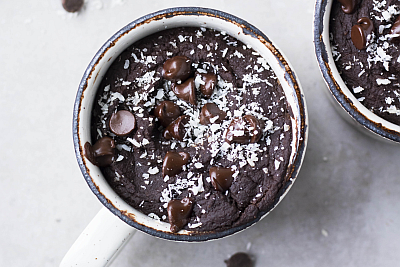
Get Recipe: 5-Minute Mug Cake
Pulse Perfect
We thank Becky for sharing her passion for pulses and legumes, and for giving us so many ideas for using them in the kitchen. So, pick a pulse and experiment with it!
And check out these other healthy foods we love to cook and eat:
- Ways to Enjoy Greek Yogurt Beyond Breakfast
- 3 Reasons to Love Chicken
- Stirring Up the Facts on Tea
- Get Hooked on Seafood
- The Mighty Mushroom
Note: Since everyone’s health history and nutritional needs are so different, please make sure that you talk with your doctor and a registered dietitian to get advice about the diet and exercise plan that‘s right for you.

